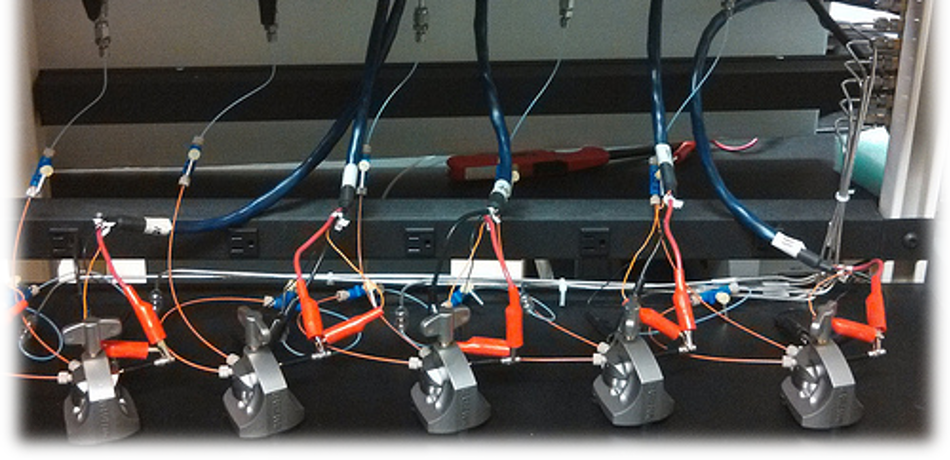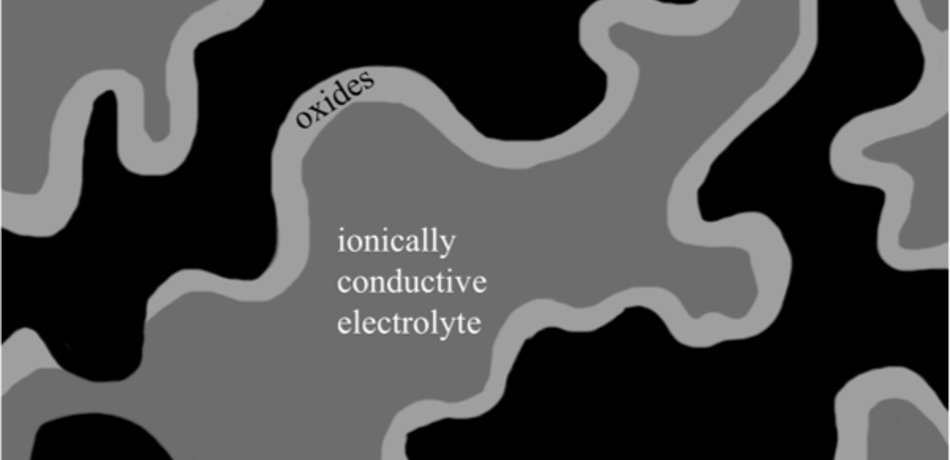Research on Rechargeable Metal-Air Batteries in the Monroe Research Group, Department of Engineering Science, University of Oxford
Rechargeable Metal-Air Batteries
Objective: Improve the performance of metal-air batteries.
Summary: Because of their extremely high theoretical energy densities, metal-air batteries have long been considered as a replacement for combustion engines in vehicles. However, many obstacles have been encountered in understanding the discharge process, and improving the rechargeability of full cells. Our laboratory works specifically with lithium-air and magnesium-air systems. Our approach combines continuum-scale modeling with targeted experiments to achieve a comprehensive understanding of the factors that most strongly impact performance in metal-air systems. We seek to characterize the primary discharge phases as a function of charge/discharge extent, charge/discharge rate, and electrolyte/solvent composition. Additionally, we hope to illuminate the dependence of oxide formation rates at the cathode on different cathode materials.

Lithium-Air Battery Modeling
Objective: Develop a continuum-scale three-phase model to study the transport and kinetic processes in a Li-Air battery.
Summary: Numerous research efforts have been dedicated to studying lithium-air batteries. One of the major problems of a lithium-air battery is that the discharge products are not soluble in the non-aqueous electrolyte. These discharge products deposit on the surface of the porous cathode and passivate the electrode. As a consequence of the deposition, there are three phases in a lithium-air cathode: the liquid electrolyte phase, the solid carbon backbone phase, and the discharge product deposition phase (as shown by the figure below). In our present work, we will develop a continuum-scale three-phase model to simulate the transport and kinetic processes in a lithium-air battery.

